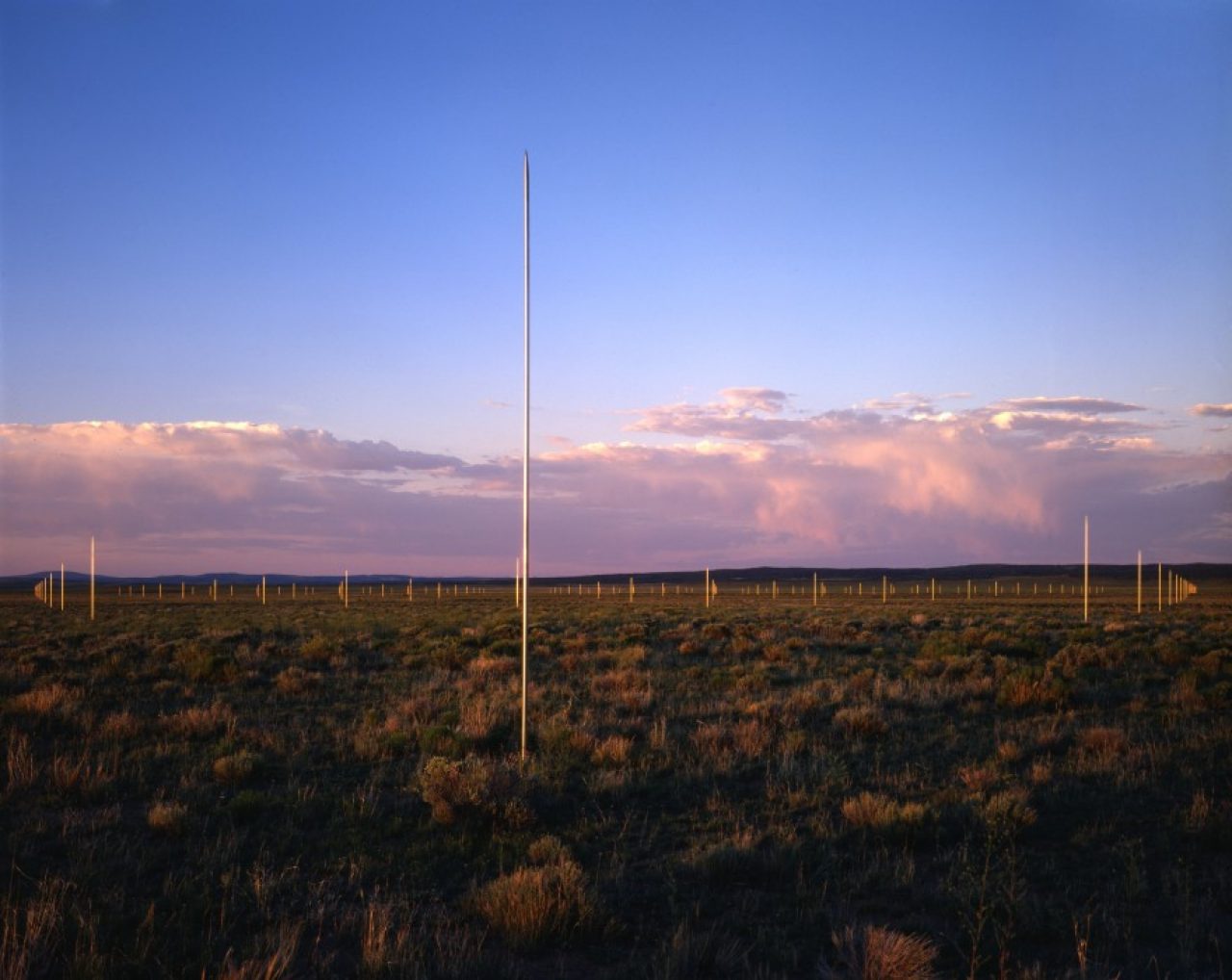The Lightning Field
A Work Of Wonder: Walter de Maria's Site-Specific Sculpture In New Mexico

Commissioned by Dia Art Foundation in 1977 as a site-specific sculpture, The Lightning Field is a remarkable work of wonder, reliant on time and space, by the late artist Walter de Maria. Described as a land work, the art is exhibited in Catron County in Western New Mexico.
Consisting of 400 stainless steel poles, arranged in a grid of 1 mile x 1 kilometre distances, the calculated placements make rectangular shapes between each other when viewed from above.
Across the beautiful desert landscape, the lightning rods are multiplied yet in unison, with the perimeter of the array of poles taking about 2 hours to walk. The desert landscape cannot be assumed, at times of the year the visitor is walking amongst wildflowers and the lightning rods, with breathtaking mountains that can be seen in the distance. It is a sublime backdrop to the sculpture, working together with nature’s elements to complete the experience. De Maria states, “The land is not the setting for the work but a part of the work”.
Beautiful under any condition, the stainless steel poles project colour transformations during the setting or rising of the sun. Their material susceptible to nature and it’s offerings. Storms are most common in August or September, whereby when lightning occurs within 200 feet, it can “feel” the rods and then come closer to the earth.
A patterned rhythm, this description can be suggested as an often recurring concept in the artists works. De Maria’s career spanned many contemporary art movements, with his works often being described at the forefront of land art, installation art, minimalism and conceptual art.
Only available to visit 6 months in the year, groups are arranged in small numbers to The Lightning Field to ensure visitors can experience the installation in full. It is all about the journey here, as well as the destination.
∆
“The land is not the setting for the work but a part of the work”
– Walter de Maria, 1977

WALTER DE MARIA LIGHTNING FIELD
Catron, U.S. 60,
Quemado, NM 87829
United States
#champ_newmexico

































